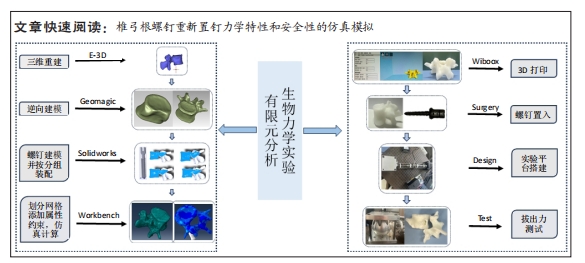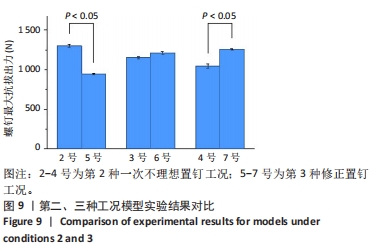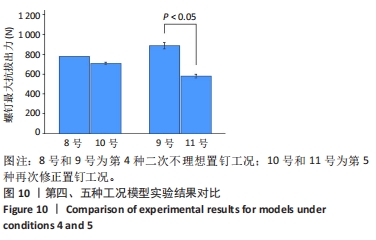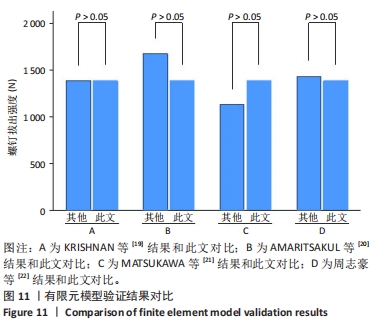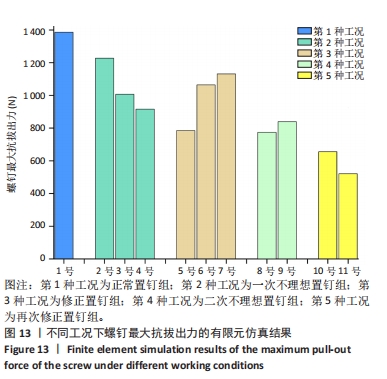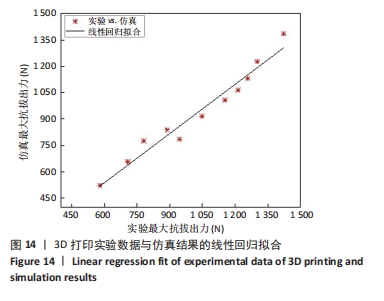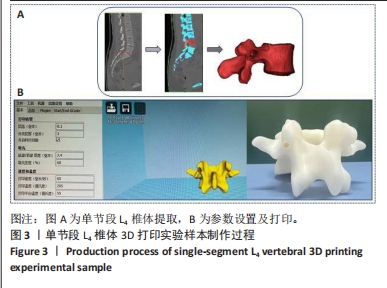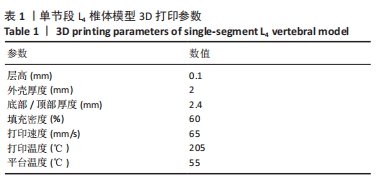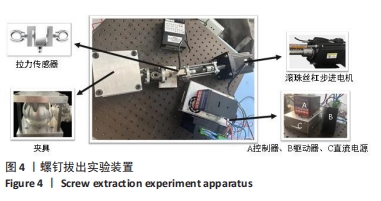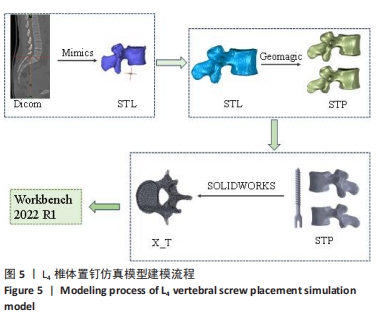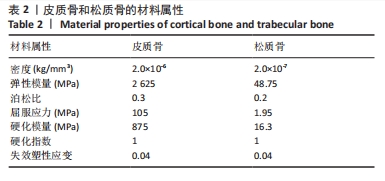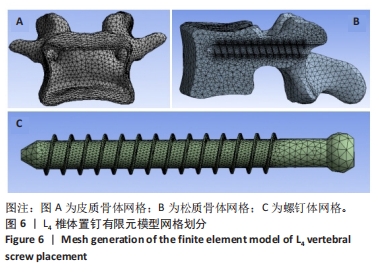[1] PEI B, XU Y, ZHAO Y, et al. Biomechanical comparative analysis of conventional pedicle screws and cortical bone trajectory fixation in the lumbar spine: An in vitro and finite element study. Front Bioeng Biotechnol. 2023;11:1060059.
[2] ROY-CAMILLE R, ROY-CAMILLE M, DEMEULENAERE C. Osteosynthesis of dorsal, lumbar, and lumbosacral spine with metallic plates screwed into vertebral pedicles and articular apophyses. Presse Med (1893). 1970;78(32):1447-1448.
[3] LI JC, YANG ZQ, XIE TH, et al. Deterioration of the fixation segment’s stress distribution and the strength reduction of screw holding position together cause screw loosening in ALSR fixed OLIF patients with poor BMD. Front Bioeng Biotechnol. 2022;30;10:922848.
[4] ROY-CAMILLE R, SAILLANT G, MAZEL C. Internal fixation of the lumbar spine with pedicle screw plating. Clin Orthop Relat Res. 1986;(203): 7-17.
[5] YANG JX, LUO L, LIU JH, et al. Incomplete insertion of pedicle screws triggers a higher biomechanical risk of screw loosening: mechanical tests and corresponding numerical simulations. Front Bioeng Biotechnol. 2024;11:1282512.
[6] BOKOV A, BULKIN A, ALEYNIK A, et al. Pedicle Screws Loosening in Patients With Degenerative Diseases of the Lumbar Spine: Potential Risk Factors and Relative Contribution. Global Spine J. 2019;9(1):55-61.
[7] 吴龙,谢成龙,林仲可.椎弓根螺钉设计与其生物力学稳定性的研究进展[J].脊柱外科杂志,2019,17(6):431-435.
[8] SARAF SK, SINGH RP, SINGH V, et al. Pullout strength of misplaced pedicle screws in the thoracic and lumbar vertebrae - A cadaveric study. Indian J Orthop. 2013;47(3):238-243.
[9] KANG DG, LEHMAN RA JR, WAGNER SC, et al. Pedicle screw reinsertion using previous pilot hole and trajectory does not reduce fixation strength. Spine. 2014;39(20):1640-1647.
[10] GODA Y, HIGASHINO K, TOKI S, et al. The Pullout Strength of Pedicle Screws Following Redirection After Lateral Wall Breach or End-plate Breach. Spine (Phila Pa 1976). 2016;41(15):1218-1223.
[11] 杜心如,叶启彬,赵玲秀,等. 腰椎人字嵴顶点椎弓根螺钉进钉方法的解剖学研究[J]. 中国临床解剖学杂志,2002,20(2):86-88.
[12] 余世浩,周胜. 3D打印成型方向和分层厚度的优化[J]. 塑性工程学报,2015,22(6):7-10,39.
[13] WEISER L, SELLENSCHLOH K, PÜSCHEL K, et al. Cortical threaded pedicle screw improves fatigue strength in decreased bone quality. Eur Spine J. 2021;30(1):128-135.
[14] LJUSTINA G, FAGERSTRÖM M, LARSSON R. Rate sensitive continuum damage models and mesh dependence in finite element analyses. Sci World J. 2014;2014:260571.
[15] BIANCO RJ, ARNOUX PJ, WAGNAC E, et al. Minimizing Pedicle Screw Pullout Risks: A Detailed Biomechanical Analysis of Screw Design and Placement. Clin Spine Surg. 2017;30(3):226-232.
[16] CHATZISTERGOS PE, MAGNISSALIS EA, KOURKOULIS SK. A parametric study of cylindrical pedicle screw design implications on the pullout performance using an experimentally validated finite-element model. Med Eng Phys. 2010;32(2):145-154.
[17] WIDMER J, FASSER MR, CROCI E, et al. Individualized prediction of pedicle screw fixation strength with a finite element model. Comput Methods Biomech Biomed Engin. 2020;23(4):155-167.
[18] KUENY RA, KOLB JP, LEHMANN W, et al. Influence of the screw augmentation technique and a diameter increase on pedicle screw fixation in the osteoporotic spine: pullout versus fatigue testing. Eur Spine J. 2014;23(10):2196-2202.
[19] KRISHNAN V, VARGHESE V, KUMAR GS. Comparative Analysis of Effect of Density, Insertion Angle and Reinsertion on Pull-Out Strength of Single and Two Pedicle Screw Constructs Using Synthetic Bone Model. Asian Spine J. 2016;10(3):414-421.
[20] AMARITSAKUL Y, CHAO CK, LIN J. Comparison study of the pullout strength of conventional spinal pedicle screws and a novel design in full and backed-out insertions using mechanical tests. Proc Inst Mech Eng H. 2014;228(3):250-257.
[21] MATSUKAWA K, YATO Y, HYNES RA, et al. Comparison of Pedicle Screw Fixation Strength Among Different Transpedicular Trajectories: A Finite Element Study. Clin Spine Surg. 2017;30(7):301-307.
[22] 周志豪,阿拉法特·卡哈尔,王轶希,等.传统椎弓根螺钉与改良皮质骨轨迹置钉技术的生物力学性能有限元分析[J].中国组织工程研究,2022,26(18):2789-2794.
[23] TANASANSOMBOON T, KITTIPIBUL T, LIMTHONGKUL W, et al. Thoracolumbar Burst Fracture without Neurological Deficit: Review of Controversies and Current Evidence of Treatment. World Neurosurg. 2022;162:29-35.
[24] DERINCEK A, WU C, MEHBOD A, et al. Biomechanical comparison of anatomic trajectory pedicle screw versus injectable calcium sulfate graft-augmented pedicle screw for salvage in cadaveric thoracic bone. J Spinal Disord Tech. 2006;19(4):286-291.
[25] HSIEH MK, LI YD, LI YC, et al. Improved fixation stability for repairing pedicle screw loosening using a modified cement filling technique in porcine vertebrae. Sci Rep. 2022;12(1):2739.
[26] LI YD, LAI PL, HSIEH MK, et al. Influence of various pilot hole profiles on pedicle screw fixation strength in minimally invasive and traditional spinal surgery: a comparative biomechanical study. Front Bioeng Biotechnol. 2024;12:1359883.
[27] HU Y, CHEN X, CHU Z, et al. Biomechanical Properties of Novel Porous Scaffold Core and Hollow Lateral Hole Pedicle Screws: A Comparative Study in Bama Pigs. Orthop Surg. 2024;16(7):1718-1725.
[28] PATEL PS, SHEPHERD DE, HUKINS DW. The effect of screw insertion angle and thread type on the pullout strength of bone screws in normal and osteoporotic cancellous bone models. Med Eng Phys. 2010;32(8):822-828.
[29] TAI CL, CHEN WP, LIU MY, et al. Biomechanical comparison of pedicle screw fixation strength among three different screw trajectories using single vertebrae and one-level functional spinal unit. Front Bioeng Biotechnol. 2022;10:1054738.
[30] YE YX, HUANG DG, HAO DJ, et al. Screw Pullout Strength After Pedicle Screw Reposition: A Finite Element Analysis. Spine (Phila Pa 1976). 2023;48(22):382-388.
[31] KALEMCI O, KIZMAZOGLU C, OZYORUK S, et al. What is the Effect of Pedicle Screw Reinsertion Through the Same Trajectory on Pullout Strength? Turk Neurosurg. 2022;32(4):635-640.
[32] LI YD, LAI PL, HSIEH MK, et al. Influence of various pilot hole profiles on pedicle screw fixation strength in minimally invasive and traditional spinal surgery: a comparative biomechanical study. Front Bioeng Biotechnol. 2024;12:1359883. |
